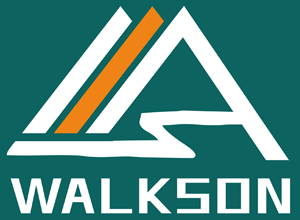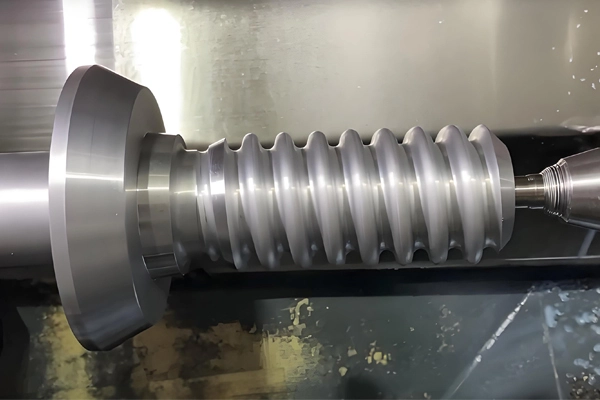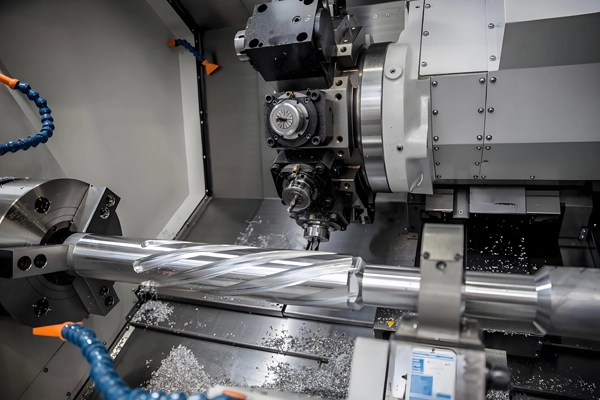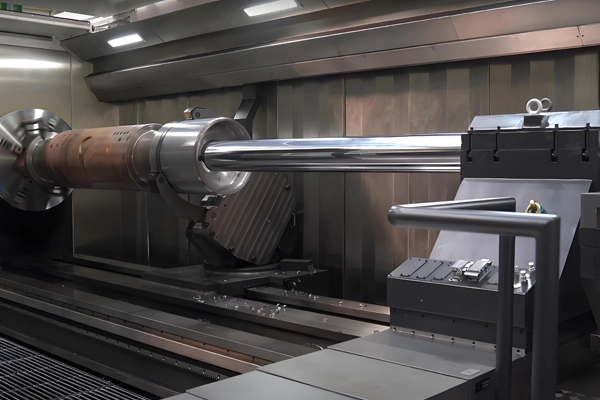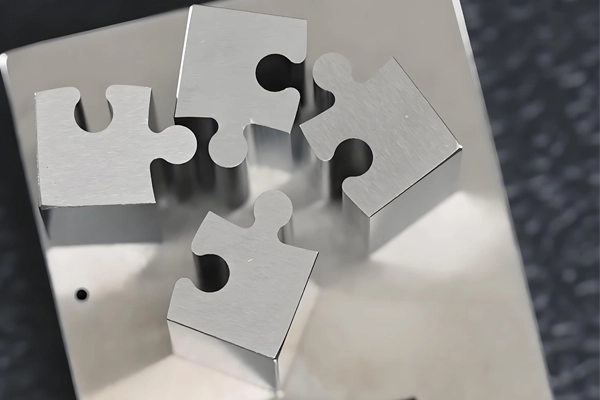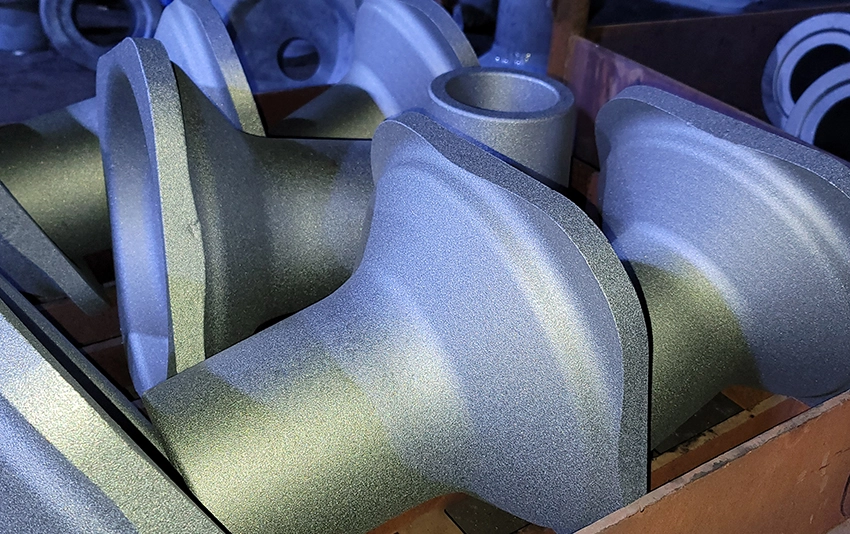Applications of CNC Threading for Castings and Forgings
1. Internal and External Threading:
CNC threading machines create both internal and external threads with high accuracy. Internal threads are typically used in components like pipe fittings, valves, and housings, while external threads are used for bolts, nuts, and other fastening parts.
2. Thread Cutting and Tapping:
Thread Cutting: This involves removing material to form threads on the outer or inner surfaces of a workpiece. CNC lathes, mills, and specialized thread-cutting machines are used.
Tapping: CNC tapping is used for creating internal threads (holes with threads) in castings and forgings, often used in assembly or for connecting components.
3. Large-Scale Threading:
CNC threading is particularly useful for large or heavy castings and forgings, such as pipes, flanges, or structural components, where precision is critical for proper fit and function.
4. Fine-Pitch and Coarse-Pitch Threads:
CNC machines can produce both fine-pitch (tight-threaded) and coarse-pitch threads, depending on the application requirements, such as for screws, bolts, and custom fasteners.
5. Multi-Start Threading:
CNC threading can produce multi-start threads (threads with more than one thread groove), which are common in high-load applications such as oil and gas, where quicker assembly and disassembly are needed.
6. Tapered Threads:
7. Thread Chasing for Repair:
Recommended Machines for CNC Threading
1. CNC Lathes with Threading Capabilities:
Haas ST Series Lathes: Popular in industries for cutting external and internal threads on castings and forgings. Known for their reliability and precision, they are ideal for high-precision threading in medium to large parts.
Mazak Quick Turn Series: Known for high-speed threading with multi-axis capabilities, these machines can produce both fine and coarse threads with tight tolerances on large, heavy workpieces.
Doosan Puma Series: These CNC lathes offer both turning and threading functions, with excellent rigidity for large castings or forgings and provide high-quality threads.
2. CNC Milling Machines with Thread Milling Capabilities:
Haas VF Series Vertical Mills: These machines are highly versatile and can produce internal and external threads, both right- and left-handed, with thread milling tools. The ability to handle large parts makes it suitable for complex threading operations.
Makino V33i Series: Known for precision threading with high-speed spindles, making them ideal for applications requiring fine threads and high surface finishes.
Okuma MU Series: These 5-axis CNC milling machines with advanced thread-milling capabilities are perfect for threading complex geometries, such as tapered or multi-start threads.
3. CNC Threading Machines:
Thread Master CNC Threading Machines: These machines are specifically designed for high-precision internal and external threading applications. Ideal for manufacturers requiring threaded components in high volumes.
Schneider CNC Threading Machines: Known for their precision in threading large components, Schneider's machines are often used in the automotive, aerospace, and heavy machinery industries.
4. CNC Tapping Centers:
Mazak VTC Series: Tapping centers designed to perform fast and accurate threading operations. These are widely used in the automotive and energy sectors for tapping internal threads in castings.
Makino T-Series: These tapping centers are high-speed machines designed for threading and tapping operations in small to medium-sized castings and forgings.
5. CNC Multi-Axis Machines for Threading:
DMG Mori NTX Series: These multi-axis machines allow for complex threading and part configurations, useful for industries that require 3D thread patterns and multiple thread types in one setup.
Fanuc Robodrill: These machines are equipped with advanced threading capabilities and can handle both standard and complex thread forms, often used for high-precision manufacturing in the aerospace industry.
Dimensional Inspection Measures
1. Thread Gauges:
Go/No-Go Thread Gauges: Used to ensure that threads are within tolerance limits. Go gauges confirm that the thread fits, while No-Go gauges ensure that the thread does not exceed certain tolerances.
Plug Gauges: Used to check the internal threads of a casting or forging. They ensure that the threads are formed to the correct size and pitch.
Ring Gauges: Used for external thread inspection, ensuring the threaded parts meet the required dimensions and pitch.
2. Coordinate Measuring Machines (CMM):
3. Optical Thread Measuring Systems:
Keyence Optical Thread Measurement Systems: These systems provide non-contact measurement of thread pitch, angle, and depth with high precision, ensuring the correct thread geometry.
4. Micrometers and Vernier Calipers:
Used for manual checks on thread diameter, depth, and pitch, especially for smaller threaded components or after initial machining.
5. Surface Finish Testers:
6. Profile Projectors and Thread Projectors:
These tools are used for projecting a magnified image of the thread profile, allowing visual inspection for correctness in terms of form, pitch, and lead.
Inspection Reports
1. First Article Inspection (FAI) Report:
Details the dimensions and quality of the first part produced, including thread geometry, pitch, and depth, compared against the design drawing and specification.
2. Geometric Dimensioning and Tolerancing (GD&T) Reports:
A detailed report that documents the geometric tolerances for thread features such as pitch diameter, thread depth, and lead angle, ensuring compliance with the drawing.
3. Thread Inspection Reports:
Provides specific measurements related to thread geometry, such as pitch, pitch diameter, major and minor diameters, and lead. These reports are crucial for verifying that threads will perform as intended in final assembly.
4. Surface Finish Reports:
Documents the quality of the thread surface, ensuring that the Ra (roughness) values meet specifications for proper sealing, fastening, and performance.
5. Material and Heat Treatment Reports (MTR):
Quality Control Measures
1. Pre-Machining Inspection:
2. Tool Condition Monitoring:
CNC threading operations require sharp, precise tools. Monitoring the condition of the threading tools (such as taps, dies, and threading inserts) ensures accurate cuts and reduces defects.
3. In-Process Monitoring:
During threading, parameters such as feed rate, cutting speed, tool wear, and coolant flow are monitored to ensure the thread is formed correctly and within tolerance.
4. Post-Machining Inspection:
After threading, parts are inspected using thread gauges, CMMs, and other measuring tools to ensure the threads meet the required specifications for fit and function.
5. Non-Destructive Testing (NDT):
If necessary, non-destructive testing such as dye penetrant or ultrasonic testing is used to ensure the integrity of the threads, particularly in high-stress applications such as pressure vessels or oil rigs.
6. Adherence to International Standards:
CNC threading processes follow international standards such as ISO 965, ANSI B1.1, or ASME B1.2, ensuring that the threading is done according to global best practices.
7. Traceability:
Full traceability of the machining process, including machine settings, tool life, and inspection results, is maintained to ensure quality control and accountability.
Advantages of CNC Threading for Castings and Forgings
1. High Precision and Accuracy:
2. Flexibility:
CNC threading can be applied to a variety of thread forms (e.g., NPT, BSP, UNC, metric threads) on both internal and external surfaces, providing versatility for different applications.
3. Consistency and Repeatability:
4. Complex Thread Forms:
 English
English  Deutsch
Deutsch  français
français  русский
русский  فارسی
فارسی  العربية
العربية  Español
Español  日本語
日本語  한국어
한국어  italiano
italiano  português
português  dansk
dansk  Suomi
Suomi 